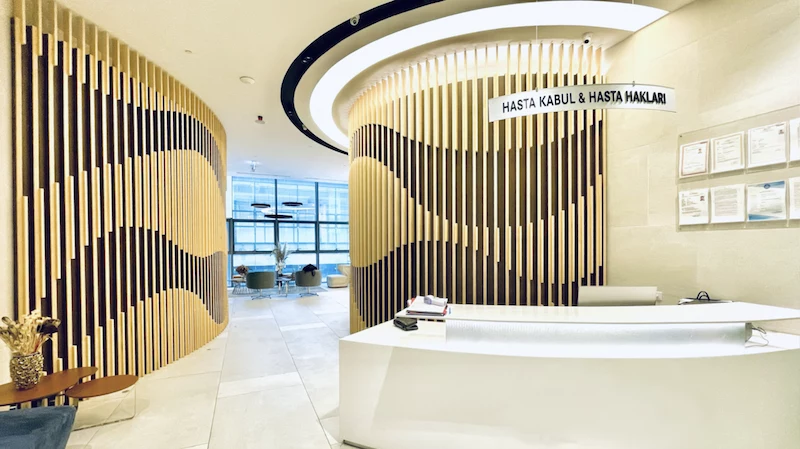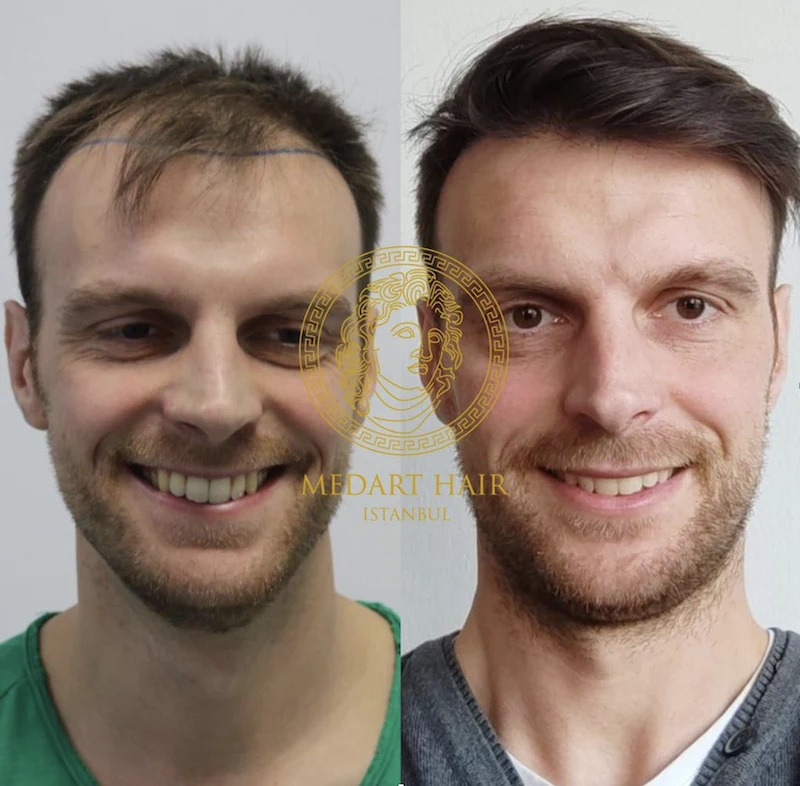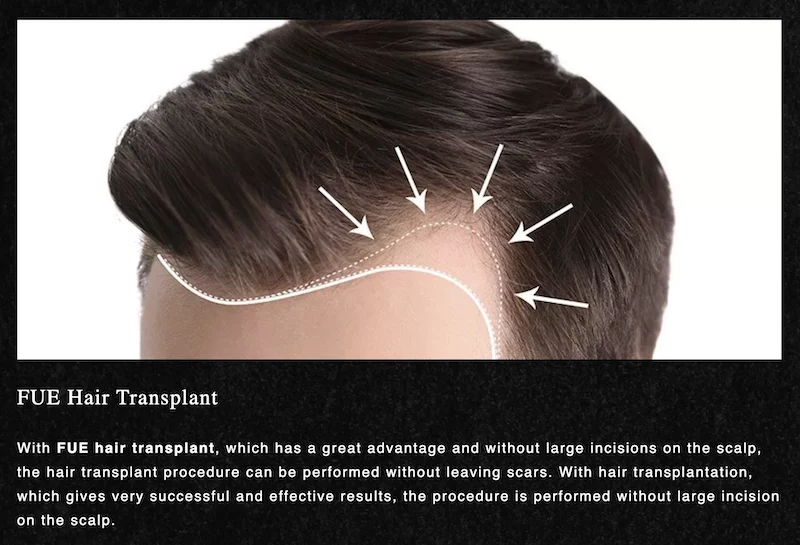My Insider’s Guide to Hair Transplants in Turkey (What Clinics Won’t Tell You)
I’ve been on the inside of the hair restoration world for a long, long time. My career has taken me from assisting top surgeons in the West to leading technical teams right in the heart of Istanbul. I’ve personally held the tools, designed hairlines, and placed thousands upon thousands of grafts. I’ve also been the one teaching new technicians the subtle art of spotting a perfect graft versus one that’s just not going to make it.
In this article
So, let’s get one thing straight: this isn’t a sales pitch for a specific clinic. This is me opening up my playbook. I want to give you the insider knowledge you need to walk into any consultation—online or in-person—and know exactly what you’re looking for. Istanbul has become the global hub for this work, but with a sea of options, it’s easy to get lost. My goal is to help you make a decision that’s safe, smart, and right for you.

First Things First: Do You Even Need This?
Before we dive into the nitty-gritty of procedures, we have to talk about the root of the problem. For most guys, hair loss boils down to a pesky hormone called DHT, which is a byproduct of testosterone. For genetic reasons, some hair follicles (mostly on the top and front) are sensitive to it. DHT makes them shrink over time until they just give up on producing hair. This is what the pros call androgenetic alopecia, or good old male pattern baldness.
The magic of a hair transplant is that the hair on the back and sides of your head is usually tough as nails and resistant to DHT. That whole horseshoe-shaped area is your “donor area.” We aren’t cloning hair or making it from scratch; we’re just strategically relocating your own DHT-proof hair to the thinning spots. It’s like moving a plant from a shady spot to a sunny one. And because those hairs keep their original programming, the results are permanent.

So, who’s a good candidate? A few things matter. First, your hair loss needs to be somewhat stable. If you’re in your early twenties and shedding like crazy, any decent clinic will tell you to hit the pause button. It’s nearly impossible to predict the final pattern, and a transplant done too early can leave you with a weird island of hair as the rest continues to recede. Not a good look.
Second, you need a healthy, dense donor area. You have to have enough supply to meet the demand. A technician will look at your donor density—basically, how many follicular units you have per square centimeter. We get excited when we see units with two, three, or even four hairs in a single graft. That’s what gives you that lush, full look. If you have very fine hair or a sparse donor area, covering a large bald spot might not be realistic.

To keep everyone on the same page, we use something called the Norwood Scale. It’s just a set of diagrams that shows the different stages of baldness, from Stage 1 (no loss) to Stage 7 (the most extensive loss). Responsible clinics get very cautious with guys heading toward a high Norwood 6 or 7. It’s a simple numbers game—you only have so much donor hair. Trying to cover too large an area by overharvesting the back of your head is a classic rookie mistake that leaves the donor area looking thin and moth-eaten. It’s a huge red flag for a clinic that’s focused on numbers, not quality.
The Main Gigs: FUE vs. DHI
Back in the day, the go-to method was the “strip method,” which left a pretty noticeable linear scar. It’s almost totally obsolete now, especially in Turkey. Today, it’s all about FUE and its popular variation, DHI.
Follicular Unit Extraction (FUE) is the modern standard. Instead of a strip, we use a tiny, hollow punch to extract individual hair follicles one by one from the donor area. This part is all about skill. A good technician minimizes the transection rate (the percentage of damaged grafts) to below 3%. Once extracted, the grafts are kept in a special chilled solution to keep them healthy.

Next, the doctor or lead technician makes tiny incisions in the recipient area, which is where the artistry really comes in. The angle and direction of these channels determine how natural your hair will look. Finally, the team uses fine forceps to carefully place each graft into its new home. FUE is fantastic for covering large areas, but the whole head usually needs to be shaved, and the grafts do spend a bit of time outside the body.
Direct Hair Implantation (DHI) isn’t a totally different technique—it’s more of a specialized version of FUE. The extraction is the same, but the placement is different. DHI uses a tool called a Choi Implanter Pen. Grafts are loaded into the pen, and the technician then creates the incision and places the graft in one single motion. The main benefit? Grafts spend less time outside the body, which can slightly boost survival rates. Plus, since the pen makes its own incision, you often don’t have to shave the recipient area. This is a huge win for people wanting to be discreet. The downside is that DHI is slower and more delicate, making it better for adding density or for smaller procedures. Trying to do a massive 4,000-graft case with DHI can lead to a very, very long day for everyone involved.

So which one is for you? To be frank, it often comes down to this:
- Choose FUE if: You need to cover a large area of baldness and are okay with shaving your head. It’s efficient and the industry workhorse for a reason.
- Consider DHI if: You’re mainly looking to add density among existing hairs, want to avoid shaving the top of your head, and your procedure is for a smaller number of grafts.
Why is Everyone Going to Turkey?
It’s not magic, it’s economics. The cost to run a clinic in Istanbul—from salaries to rent—is simply lower than in the US or Western Europe. The government has also been very supportive of medical tourism. This doesn’t mean the quality is lower; in fact, because of the sheer volume, Turkish technicians often get more hands-on experience in a single year than their Western counterparts might get in five. Practice makes perfect.

But let’s talk real numbers. For a quality, all-inclusive package from a reputable clinic in Istanbul, you should expect to budget between $2,500 and $7,000. This usually covers the procedure, airport transfers, a few nights in a nice hotel, and your post-op care package. If you see prices drastically lower than that, like under $2,000, your “hair mill” alarm should be ringing loud and clear.
This is the dark side of the Istanbul boom. These “hair mills” are quantity-focused operations. They might run multiple surgeries in one room at the same time, with a doctor’s name on the door but no actual doctor in sight. The work is done by poorly trained, overworked technicians. The price is tempting, but the risk of a botched job, overharvested donor area, or unnatural hairline is incredibly high.
How to Spot a Great Clinic (and Avoid a Disaster)
This is where you need to put your detective hat on. Your result is 100% dependent on the team you choose. You’re not buying a TV; you’re choosing a skilled medical team.

Your First Step Today: Before you even send a single email, do this. Get your phone and take clear, well-lit photos of your hair: front, top, back, and both sides. This is your ‘Day 0’ documentation. It’s the most important tool you have for getting an honest online assessment.
When you start researching, don’t just rely on slick Instagram pages. Dive into patient-run forums (the Hair Restoration Network is a well-known one) where people share their raw, unfiltered results and experiences. That’s where you’ll find the real story.
A good clinic’s process feels professional from the start. A bad one feels like a used car lot. Here’s what to look for:
- A Good Clinic: Insists on a video consultation with the actual doctor or a senior medical consultant. They’ll ask about your health and hair loss history.
- A Hair Mill: A salesperson just quotes you a price and a “maximum graft” number based on your photos, often with high-pressure tactics like “this price is for today only!”
- A Good Clinic: Gives you a realistic graft estimate (a safe one-day limit is around 4,000-5,000 grafts) and explains their reasoning. They’ll talk about managing your donor area for the future.
- A Hair Mill: Promises an insane number like 6,000 or 7,000 grafts in one go. This is a massive red flag for overharvesting.
- A Good Clinic: Is transparent about who does what. For example, “The doctor designs the hairline and makes the incisions, and our senior technicians with X years of experience handle extraction and placement.”
- A Hair Mill: Is vague about the team. If you can’t get a straight answer about who is touching your head, run.
A Technician’s Pro-Tip: When a clinic shows you before-and-afters, ask for a video of the patient combing through their hair one year later. Photos can be styled and lit to create an illusion of density. Video doesn’t lie.
The Journey: What to Realistically Expect
The surgery day itself is long—plan for 6 to 9 hours. After the hairline design, you’ll get local anesthesia injections. They sting for a bit, but then the area is numb. You’ll be lying down for a long time, but they give you breaks and lunch.
Quick Tip on Packing: Bring button-down or zip-up shirts for your trip! You won’t want to pull anything over your head for the first week. A travel neck pillow is also a lifesaver for sleeping upright to control swelling.
The first week is about recovery. Your head will be red and tender. The first wash is critical, usually on day 2 or 3. A nurse should show you how, but here’s the gist:
- Step 1: Gently dab the provided foam or lotion onto the transplanted area. Don’t rub! Let it sit for about 20-30 minutes to soften the scabs.
- Step 2: Fill a cup with lukewarm water and gently pour it over your head to rinse everything off. Absolutely NO direct shower pressure on the new grafts.
- Step 3: You can gently pat the donor area (the back) dry with a clean, soft towel. Let the recipient area air dry completely.
Then comes the part that freaks everyone out: shock loss. Around 2-4 weeks in, most of the tiny transplanted hairs will fall out. This is 100% normal. The follicle is safe and sound under the skin, just entering a resting phase. You have to trust the process.
Growth really starts around the 3-month mark. At first, it’s fine and wispy. By 6 months, you’re looking at about 50-60% of the final result, which is when you really start to notice a difference. But honestly, the full, final, mature result can take 12 to even 18 months, especially for the crown area. Patience isn’t a suggestion; it’s a requirement.
Final Thoughts and Practical Questions
A great hair transplant is something you feel, not something you see. It should be undetectable. The difference comes down to artistry, especially in the hairline. A natural hairline is soft and irregular, not a straight, harsh line. It should be built with fine, single-hair grafts at the very front, gradually getting denser behind that.
By the way, people always ask about the logistics. How do you pay? Most reputable clinics accept wire transfers or cash (Euros or Dollars). Some accept credit cards but may add a fee. What about follow-up? A good clinic will assign you a post-op consultant you can message with questions for the full year. And the language barrier? In any clinic catering to international patients, the consultants and key staff will speak excellent English.
Finally, please remember this is a surgical procedure. It’s very safe when done right, but it has risks. That’s why choosing a clinic that is licensed by the Turkish Ministry of Health and supervised by a real doctor is non-negotiable. This is my experience as a technician, not official medical advice. You have to talk to a qualified doctor about your own specific case.
A trip to Turkey for a hair transplant can absolutely be a life-changing positive. I’ve seen the look on people’s faces when their confidence comes back. But that amazing result is built on a foundation of smart research. Do your homework, trust your gut, and you’ll give yourself the best shot at a result you’ll love for years to come.
Inspirational Gallery
Beyond your passport and booking confirmation, a few small items can make a world of difference for your trip to Istanbul. Pack several button-up or zip-up shirts to avoid pulling anything over your head post-op. A U-shaped travel pillow is non-negotiable for sleeping upright comfortably, and a can of sterile saline spray (like Sterimar) is great for keeping the recipient area clean and hydrated during the first few days.
The art of a truly natural-looking hairline lies in its planned imperfection. A perfectly straight, harsh line is the number one giveaway of a hair transplant.
Will my new hair look and feel natural?
Absolutely, if done correctly. The key is in the technician’s skill. They must meticulously implant single-hair grafts at the very front of the hairline, mimicking nature’s soft transition. The angle and direction of each implanted hair must match the surrounding native hair perfectly. When you run your hands through it a year later, the only thing you should notice is the density, not the procedure.
Sapphire FUE: This method uses blades made from sapphire, not steel, to create the channels where grafts are implanted. The V-shaped incisions can be finer, potentially allowing for denser packing and theoretically reducing tissue trauma for a quicker recovery.
DHI (Direct Hair Implantation): This technique uses a specialized Choi Implanter Pen that makes the incision and places the graft in one motion. It offers excellent control over angle and depth and is often favored for adding density between existing hairs without shaving the entire recipient area.
The best choice depends on your specific case, hair loss pattern, and the clinic’s expertise with each tool.
A 2019 report valued the Turkish health tourism market at over $1.5 billion, with hair transplantation being a primary driver, attracting over 500,000 medical tourists annually.
This massive volume is why prices are so competitive. However, it also means the quality spectrum is incredibly wide. Your job as a patient is to sift through the noise and find the clinics that prioritize patient outcomes over patient volume, ensuring you’re not just another number in this booming industry.
Many clinics offer packages that sound incredibly complete, but the devil is in the details. Before you commit, clarify a few points:
- Accommodation: What’s the exact hotel? Check its reviews and location. Is it close to the clinic or in a tourist-heavy area?
- Transfers: Are they private or shared? Do they cover just the airport-hotel-clinic route, or are you on your own for any other travel?
- Post-Op Kit: Does it include everything you need for the first week, like special shampoo (e.g., Bioxcin Forte), lotion, and medication, or are there hidden pharmacy costs?
Insider Tip: The single most critical factor that clinics rarely discuss in detail is the graft’s ‘out-of-body’ time. Grafts are living tissue. The longer they’re outside the body, the lower their survival rate. A top-tier team works in seamless harmony to extract, sort, and implant with maximum efficiency. Ask about their process and whether they use a proper storage solution like HypoThermosol to preserve the follicles.
- It perfectly frames your facial features.
- It’s undetectable, blending seamlessly with any existing hair.
- It makes you look refreshed and younger, not “worked on.”
The secret to achieving this? It’s all about the hairline design. A master technician never creates a perfectly straight line but instead uses “micro-irregularities”—a subtle, zig-zag pattern of single follicles—to replicate a real, god-given hairline.
Be prepared for the “ugly duckling” phase. Around two to five weeks after the procedure, most of the transplanted hairs will shed. This is a completely normal and expected part of the cycle called ‘shock loss.’ It’s the follicles resetting before they enter a new growth phase. Patience is key; true new growth begins around month three or four, with the final result taking 12 to 18 months to fully mature.
According to a study in Dermatologic Surgery, successful hair restoration surgery has a profound positive psychosocial impact, significantly improving patients’ self-esteem, confidence, and overall quality of life.










